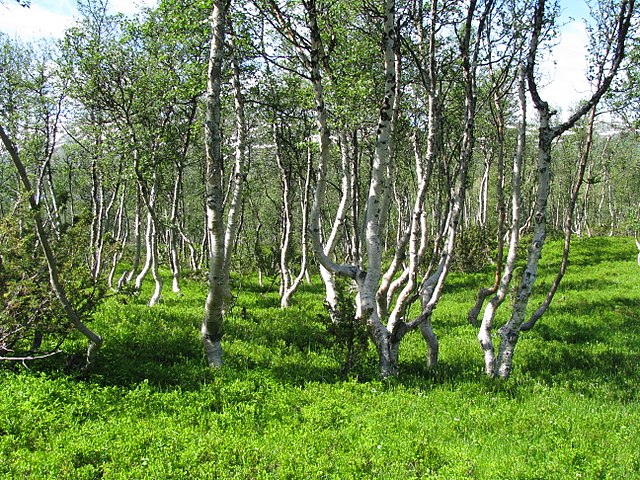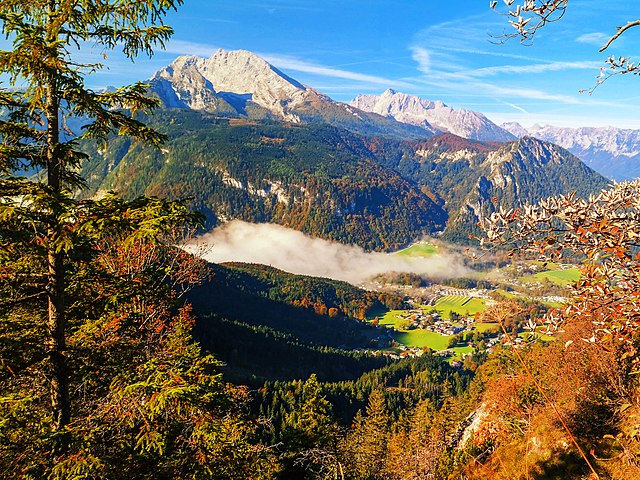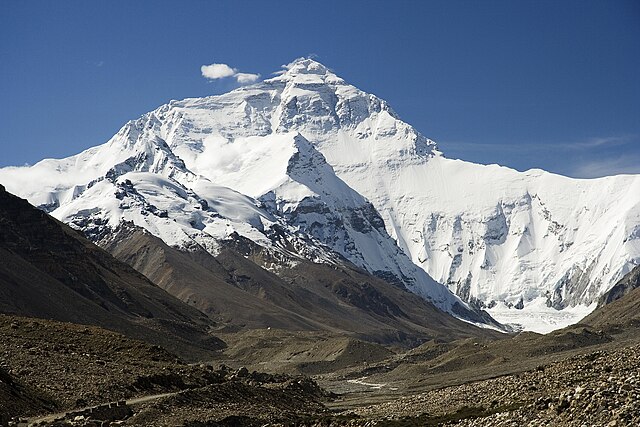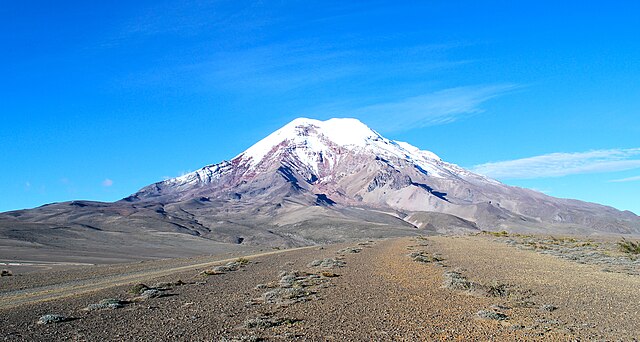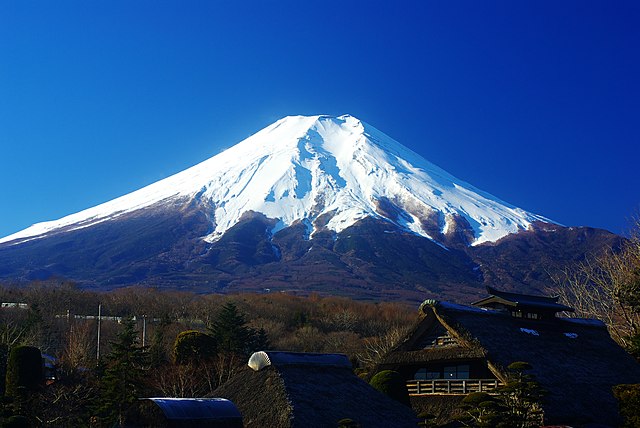Montane ecosystems are found on the slopes of mountains. The alpine climate in these regions strongly affects the ecosystem because temperatures fall as elevation increases, causing the ecosystem to stratify. This stratification is a crucial factor in shaping plant community, biodiversity, metabolic processes and ecosystem dynamics for montane ecosystems. Dense montane forests are common at moderate elevations, due to moderate temperatures and high rainfall. At higher elevations, the climate is harsher, with lower temperatures and higher winds, preventing the growth of trees and causing the plant community to transition to montane grasslands and shrublands or alpine tundra. Due to the unique climate conditions of montane ecosystems, they contain increased numbers of endemic species. Montane ecosystems also exhibit variation in ecosystem services, which include carbon storage and water supply.
A subalpine lake in the Cascade Range, Washington, United States
A stand of mountain birch at around 750 m in Trollheimen, typical of Scandinavian subalpine forests
Waimea Canyon, Hawaii, is known for its montane vegetation.
Temperate montane forest in Bavaria, Germany
A mountain is an elevated portion of the Earth's crust, generally with steep sides that show significant exposed bedrock. Although definitions vary, a mountain may differ from a plateau in having a limited summit area, and is usually higher than a hill, typically rising at least 300 metres (980 ft) above the surrounding land. A few mountains are isolated summits, but most occur in mountain ranges.
Mount Everest, Earth's highest mountain
Chimborazo, Ecuador, whose summit is the point farthest away from the Earth's center
Fuji volcano
Illustration of mountains that developed on a fold that has been thrust


